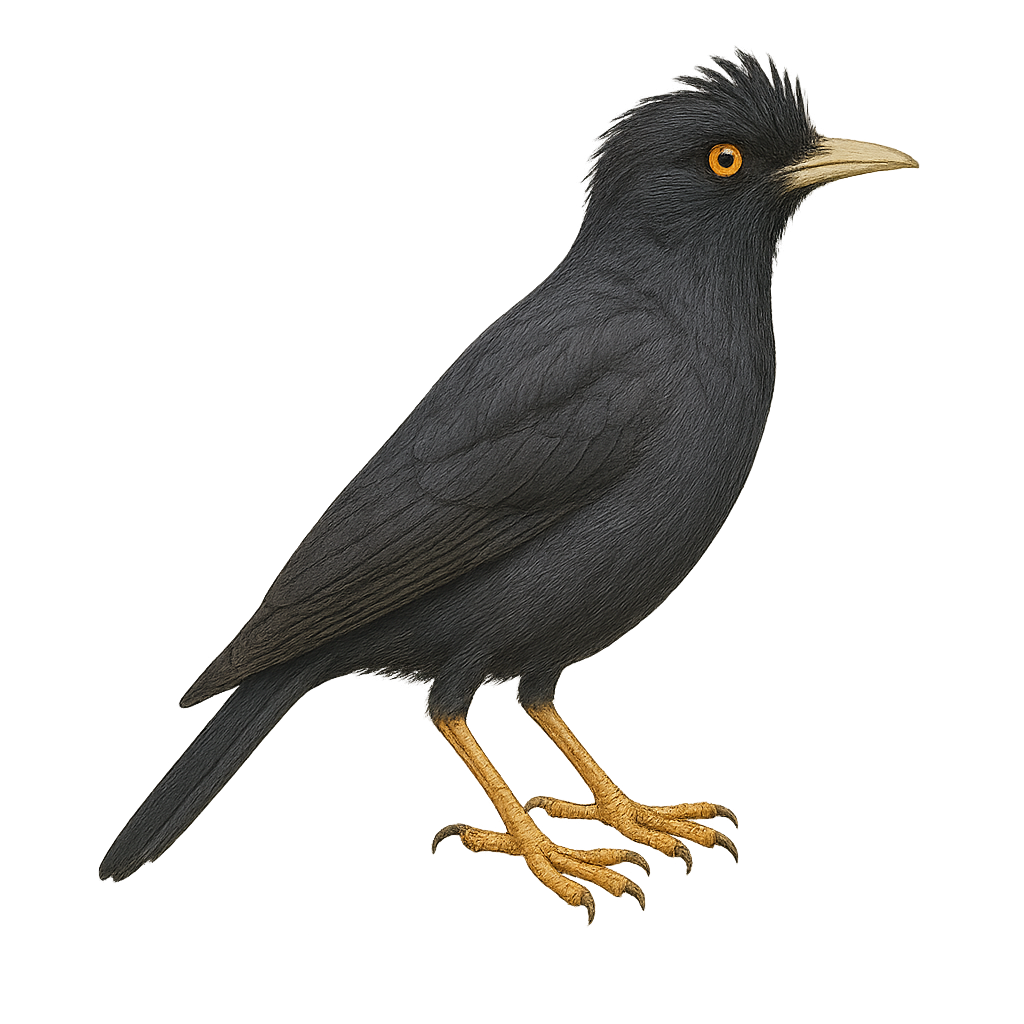Your wildlife photography guide.
Explore the crested myna in detail, study its behavior, prepare your shots.
Where to observe and photograph the crested myna in the wild
Learn where and when to spot the crested myna in the wild, how to identify the species based on distinctive features, and what natural environments it inhabits. The WildlifePhotographer app offers tailored photography tips that reflect the crested myna’s behavior, helping you capture better wildlife images. Explore the full species profile for key information including description, habitat, active periods, and approach techniques.
Crested Myna
Scientific name: Acridotheres cristatellus

IUCN Status: Least Concern
Family: STURNIDAE
Group: Birds
Sensitivity to human approach: Tolerant
Minimum approach distance: 5 m
Courtship display: April to June
Incubation: 13-15 jours
Hatchings: April to July
Habitat:
Forests, urban areas, cultivated fields
Activity period :
Primarily active during the day, with peak activity in the morning and late afternoon.
Identification and description:
The Crested Myna, or Acridotheres cristatellus, is a medium-sized bird, about 25 cm long. It is characterized by its glossy black plumage, striking yellow eyes, and a distinctive crest on its head. Native to Asia, it is often found in urban and rural areas, easily adapting to human-altered environments. An omnivore, it feeds on insects, fruits, and seeds. Its song is varied, including whistles and imitations of other birds. The Crested Myna is a social bird, often seen in small groups. Although primarily sedentary, it may make short movements to find food.
Recommended lens:
400 mm – adjust based on distance, desired framing (portrait or habitat), and approach conditions.
Photography tips:
To photograph the Crested Myna, focus on urban areas or forest edges where it is often active. Use a 400mm or longer telephoto lens to capture precise details without disturbing the bird. The best lighting is early morning or late afternoon. Be patient and discreet, as although it is tolerant, it may fly away if you get too close. Take advantage of its social behavior to capture interactions between individuals.
The WildlifePhotographer App is coming soon!
Be the first to explore the best nature spots, track rutting seasons, log your observations, and observe more wildlife.
Already 1 432 wildlife lovers subscribed worldwide

